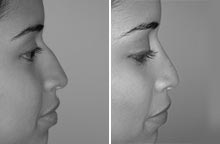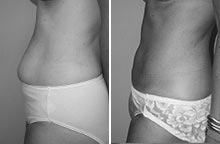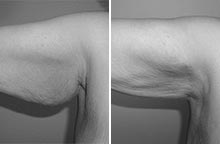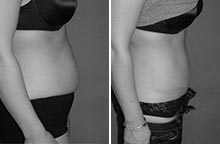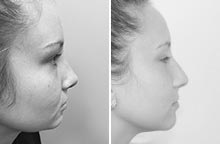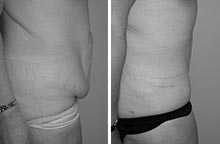Septoplasty
Consultations offered at our three convenient locations in New Jersey, Bergen County and Englewood, NJ
Your nose is a complex anatomical structure that performs several essential functions, including air exchange, the ability to smell, and air filtration. The external nose, as seen on the outside, is formed by bone and cartilage covered by skin.
The nasal septum, a cartilage and bone structure, divides the nasal cavity into two. The cavity is lined with mucous membranes and tiny hairs that trap dust and pathogens, and the area responsible for smell is located on the roof.
Although your nose plays a functional role, it is also the center of your face and greatly impacts your appearance. The talented Dr. Abramson and his staff can perform a septoplasty in Englewood to achieve changes in structure and function that improve your ability to breathe.
Contents
What Is Septoplasty?
Septoplasty is a surgical procedure to correct a deviated nasal septum, the partition between the two nasal cavities. When the septum is deviated to one side, it can cause significant breathing difficulties, nasal congestion, and recurring sinus infections. The goal of septoplasty, as performed by Dr. Abramson and his Englewood staff, is to straighten the septum, which allows better airflow and nasal function.
When performed alone, septoplasty can take 30 to 90 minutes under local or general anesthesia. It may be recommended when other non-surgical treatments have failed to alleviate symptoms. This procedure has a high success rate when used to improve breathing and reduce symptoms such as recurring sinus infections.
What Can a Septoplasty Correct?
Septoplasty can be performed in our Englewood office in combination with rhinoplasty for cosmetic reasons in addition to a deviated septum. For instance, a traumatic injury or previous surgery can lead to a nasal deformity that affects the nose’s appearance and function. When executed with rhinoplasty, septoplasty can help correct these issues, restoring normal structure, function, and appearance.
Dorsal Hump
Nasal dorsal humps may be caused by an injury, overgrowth of cartilage or bone, or by genetics. Sometimes the hump is not present during childhood but becomes more evident as an individual gets older. While there are non-surgical methods, such as contouring makeup or dermal fillers, rhinoplasty and septoplasty are permanent approaches that work to reshape the nose and cartilage.
Our surgeon can correct a dorsal hump while fixing a deviated septum, a combined approach known as septorhinoplasty. The results include a more proportionate face, improved alignment, and elimination of nasal blockages that were caused by the dorsal hump. For some people, it can also treat sleep apnea.
Drooping Tip
Dr. Abramson can help correct a drooping tip on the end of the nose using a closed or open septorhinoplasty approach. A drooping tip is typically more apparent when a person smiles and can be present from birth or result from a septum, cartilage, or nasal bridge that grows too long.
It can also happen as a secondary effect of a previous rhinoplasty procedure that weakens the support for the tip of the nose. When the tip is displaced, it makes a person look older and sometimes unpleasant.
Nose Size
Septoplasty may be combined with rhinoplasty to change the size or shape of your nose at our Englewood office. If you feel your nose is too large for your face, Dr. Abramson can remove some of the cartilage and bone during surgery, which can also improve function.
If your nose is too small in proportion to your face, additional cartilage can be transplanted from your ear or ribs and grafted to your nose to balance it with the rest of your face.
What to Expect During Recovery
After a septoplasty or septorhinoplasty, your recovery requires that you carefully follow Dr. Abramson’s post-operative instructions. Immediately after surgery, you can expect some swelling and bruising around the eyes and minimal discomfort in your nose that can be managed with a prescription pain medication.
Depending on the amount of work done, nasal packing or splints may be placed inside the nose so the bone and cartilage begin to heal correctly. It is crucial to keep your head elevated for the first week to minimize swelling and allow the area to drain properly.
To protect the incisions, avoid activities that increase blood pressure in your head, such as bending, lifting heavy objects, or doing strenuous exercise. The swelling and bruising will gradually decrease in the next two to four weeks. You may also be asked to avoid blowing your nose and use a saline spray to keep the area moist and clear of crusting.
Total recovery and final results can take up to one year. During this time, you may experience some numbness or changes to sensation around the nose, which gradually resolves as the swelling subsides and function improves.
Book a Consultation to Learn More About Septoplasty in Englewood
Difficulty breathing due to a deviated septum or other concern within the structure of the nose can complicate your life. We encourage you to call our office today and schedule your consultation to learn more about septoplasty in Englewood and how the surgery may help improve function and aesthetics.
Want to see your new you before the procedure?
With Crisalix's 3D imaging technology you can see how you would look post-procedure if full 3D.
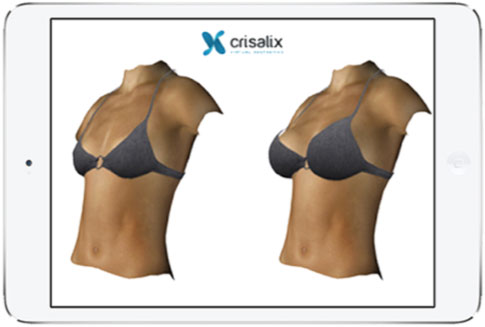 Learn More
Learn More